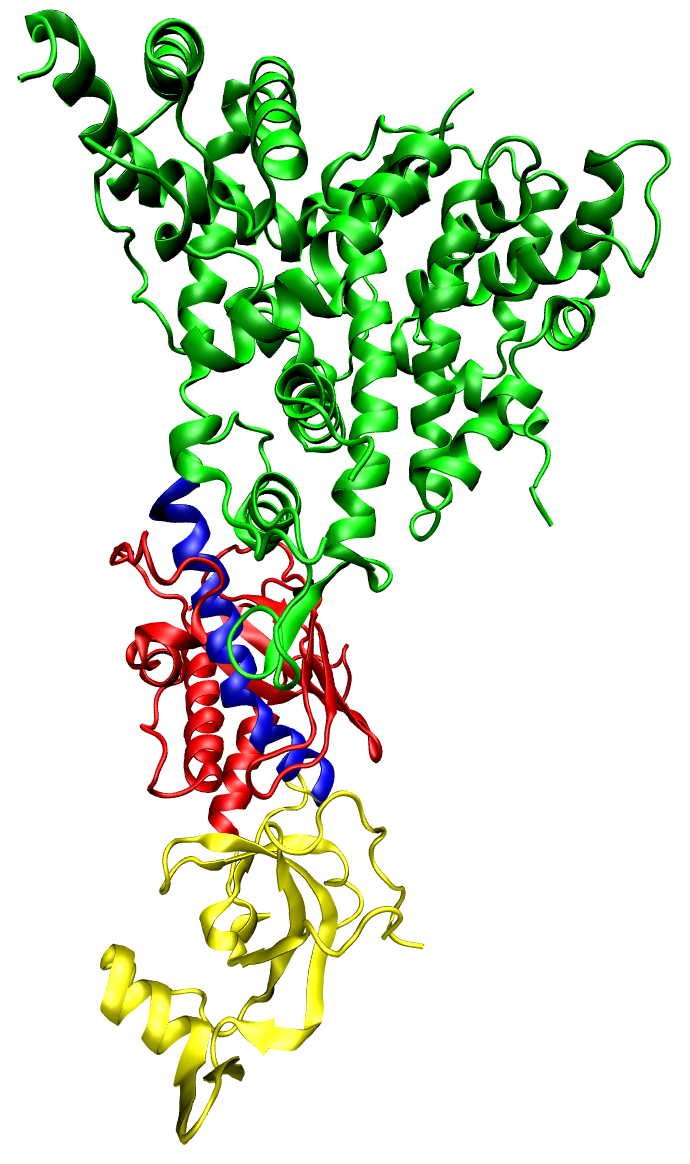RNAi is a powerful technique used to switch off DNA polymerases in cancer cells grown in the lab. The technique has been shown to switch of genes in cells, and in small organisms like worms and flies. But until now we haven't seen that it can work in humans - it's really been a technique restricted to lab studies. Now research from Mark Davis and his colleagues in the US, published in the journal Nature, shows the first inklings that we might be able to get RNAi to work in patients.
RNAi stands for RNA interference. When a gene is switched on, it produces a little message in the form of RNA, a chemical that's similar to DNA. This RNA message then goes into the cell, where it's 'read' by the cell's protein 'factories', and the appropriate protein is produced. It's a bit like copying a recipe out onto a piece of paper, then taking the paper into the kitchen to bake a cake, rather than the whole recipe book.
 |
| One molecule of the Dicer-homolog protein. Dicer is an RNase that cleaves long double-stranded RNA molecules into short interfering RNAs (siRNAs) as a first step in the RNA interference response, and also initiates the formation of the RNA-induced silencing complex (RISC). © Opabinia regalis |
Researchers discovered that short reverse stretches of RNA could effectively silence RNA messages, and individually switch specific genes off. It's an incredibly powerful technique that helps researchers to switch genes on and off in the lab, as we heard in my earlier story, but it's not been clear whether it actually works in larger animals, or in humans.
In this case, the researchers were running a small-scale clinical trial to test RNAi in patients with cancer. They were using tiny nanoparticles to deliver the RNA to the tumours - for some reason that we don't understand, nanoparticles seem to be attracted to tumours.
The scientists discovered that the nanoparticles had effectively delivered their RNA payload to the cancer cells, and that the therapy was working as expected - the specific gene they were targeting, called RRM2, was getting switched off.
This is a very small-scale, early trial and in this paper, the researchers only present data from three patients, all of whom had melanoma skin cancer. And we don't know whether the RNAi actually helped to treat their cancer. Still, it's an impressive demonstration that the RNAi technique can work in humans, and bodes well for future research in this area.










Comments
Add a comment